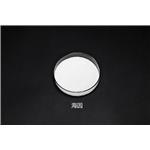- Hydantoin
-

- $100.00/ kg
-
2024-09-20
- CAS:461-72-3
- Min. Order: 1kg
- Purity: 99%
- Supply Ability: 5000
- Hydantoin
-

- $9.00 / 1ASSAYS
-
2024-09-19
- CAS:461-72-3
- Min. Order: 1ASSAYS
- Purity: 99%
- Supply Ability: 10000kg
- Hydantoin
-

- $0.00 / 25kg
-
2024-09-19
- CAS:461-72-3
- Min. Order: 25kg
- Purity: 98.5%
- Supply Ability: 20000mt
|
| | Hydantoin Basic information |
| | Hydantoin Chemical Properties |
| Melting point | 218-220 °C (lit.) | | Boiling point | 187.47°C (rough estimate) | | density | 1.4457 (rough estimate) | | vapor pressure | 0Pa at 25℃ | | refractive index | 1.5110 (estimate) | | storage temp. | Store below +30°C. | | solubility | SLIGHTLY SOLUBLE | | form | Fine Powder | | pka | pKa 9.1 (Uncertain) | | color | White to light yellow | | Water Solubility | SLIGHTLY SOLUBLE | | Merck | 14,4760 | | BRN | 110598 | | LogP | -1.69 | | CAS DataBase Reference | 461-72-3(CAS DataBase Reference) | | NIST Chemistry Reference | 2,4-Imidazolidinedione(461-72-3) | | EPA Substance Registry System | 2,4-Imidazolidinedione (461-72-3) |
| | Hydantoin Usage And Synthesis |
| Chemical Properties | White Solid | | Uses | The product has been used as a substrate (at 40 °C and pH 9.0) to determine the D-hydantoinase activity in adzuki bean extract. | | Uses |
Reactant for synthesis of: N-benzyl aplysinopsin analogs as anticancer agents, D-glutamic acid based inhibitors, Antidiabetic chromonyl-2,4-thiazolidinediones, GSK-3β, inhibitors with brain permeability, Thiazolidinedione derivatives as 15-PGDH inhibitors, and Radio-sensitizing agents.
| | Definition | ChEBI: Hydantoin is an imidazolidine-2,4-dione. | | Pharmaceutical Applications | Control of generalized convulsive status epilepticus; prevention and treatment of seizures during neurosurgery; short-term substitute for oral phenytoin. | | Mechanism of action | Hydantoins are a class of drugs mainly used to treat seizures (anticonvulsant or antiepileptic drugs). Hydantoins reduce seizures by targeting the sodium channel present throughout the nerves. Activation of sodium channels results in the conduction of electrical impulses and the release of neurotransmitters. It could stabilise neuronal membranes by decreasing sodium and calcium ion influx into the neurons. Also decreases post-tetanic potentiation and repetitive discharge. | | Pharmacokinetics |
Completely absorbed after IM administration. Protein binding: 95%–99%. Rapidly and completely hydrolyzed to phenytoin after IM or IV administration. Time of complete conversion to phenytoin: 4 hr after IM injection; 2 hr after IV infusion. Half-life: 8–15 min (for conversion to phenytoin).
|
| | Hydantoin Preparation Products And Raw materials |
|